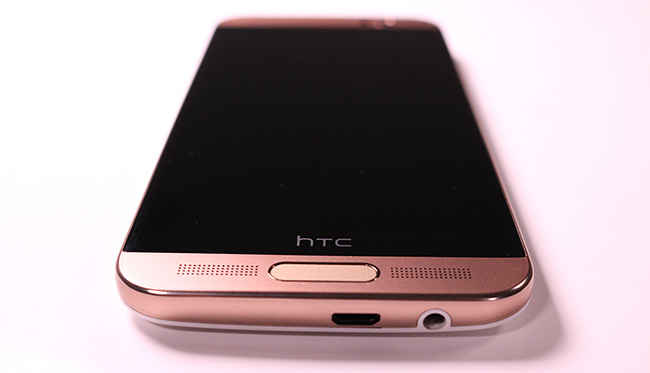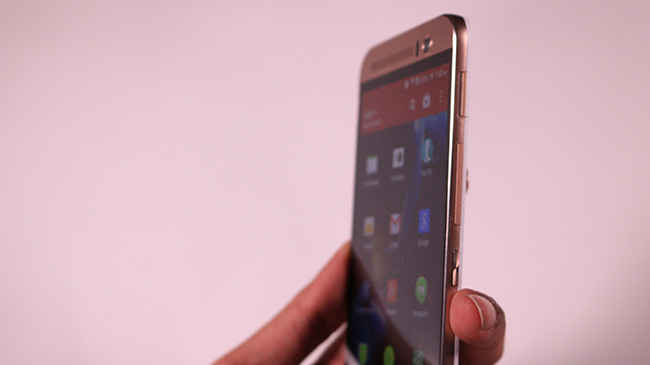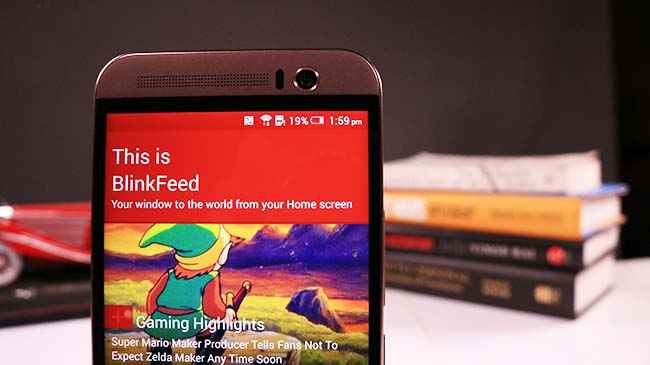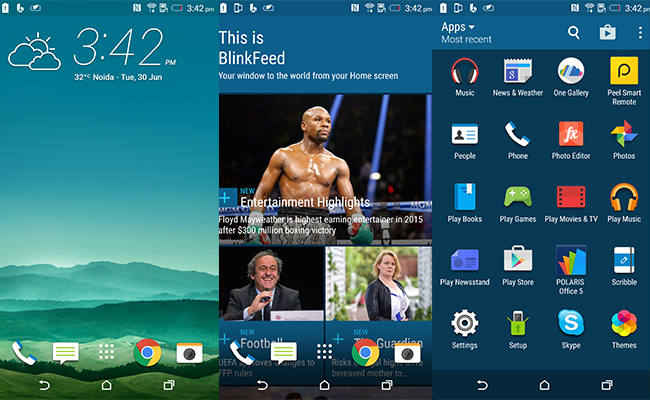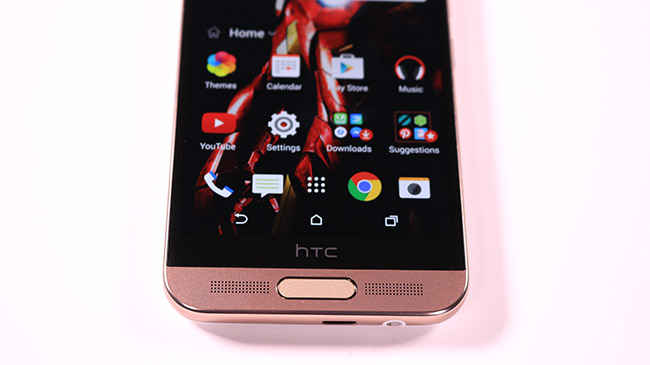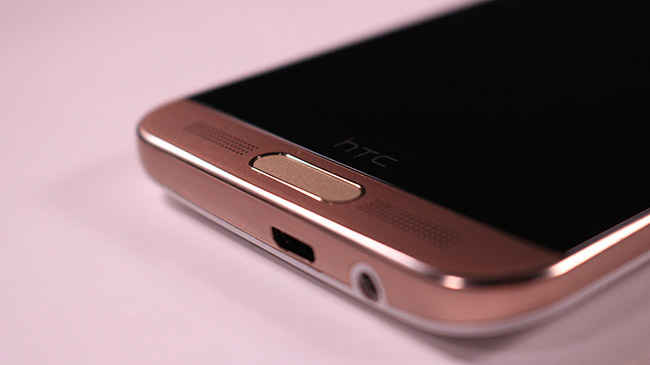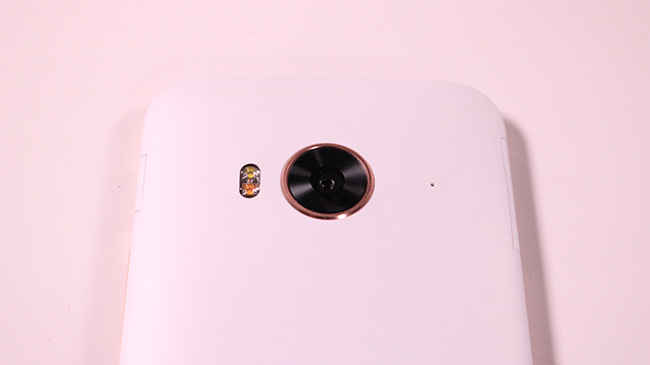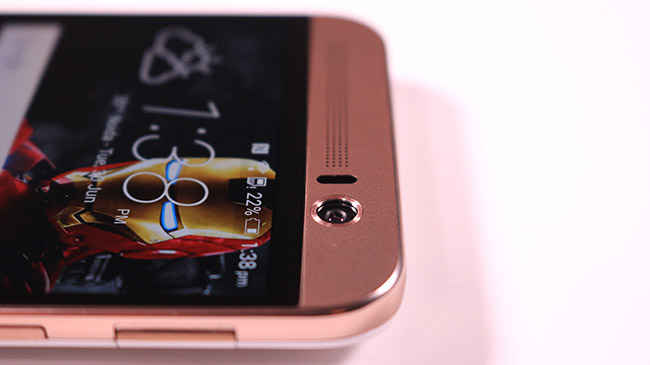HTC One ME (Dual-SIM) Review : All that glitters
Yes, the HTC One ME (Dual-SIM) does look and feel like a device that costs 40 grand. The camera is decent, audio quality on the speakers (and on better earphones) is really good, and daily tasks like browsing, texting and lightweight games are a breeze. But it fails when it comes to heavier games, and HTC’s Sense UI fails to invoke the suave flow that much cheaper devices like Xiaomi’s Mi 4 and the OnePlus One do. Plus, with the excellent Samsung Galaxy S6 currently available for the same price (Rs. 1,000 cheaper, actually), it’s really hard to find a reason to recommend the HTC One ME Dual-SIM to anyone.
The HTC One ME is indeed beautiful to look at. I love the immaculate finish, the uber-responsive and accurate fingerprint scanner, the way the LED indicator blinks out of a single block in the earpiece mesh. It does look its price, for sure. But, a few days later, I cannot really say that I am equally pleased with the way the One ME (Dual-SIM) works. Here's why.
Build and Design
HTC has built the One ME really well. Clad entirely in metal on its front and sides, with a matte plastic back that feels smooth and immaculate in touch and feel. The rounded edges give a seamless touch to its design, and is complemented well by the curved back that makes the phone fit into your palm. The white back with the rose gold metal, though, was somewhat of a game spoiler for me. That's my personal opinion though. Personally, the white somewhat kills the shine of the rose gold front. I found the other two colours (Gold Sepia and Meteor Grey) to look better.
The screen takes up almost the entire space up front. The earpiece mesh, ambient light sensor and front camera are above the screen. The front camera has a shiny metal ring around it, and the notification light is housed inside the earpiece mesh. Below the screen, the home button doubles-up as a super-responsive and accurate fingerprint sensor, and has dual speaker grills on either side. At the back, a slightly protruding camera lens with dual-colour flash to its left and the ‘HTC’ logo adorn the back panel.
The HTC One ME will impress anyone the first time around. Around its edges, the microUSB/charging port is at the bottom of the phone, with the 3.5mm headphone port to its right. To the left, a plastic flap hides the hot-swappable dual-SIM slots. The top edge has the infrared sensor, and to the right, there’s another flap hiding the memory expansion slot, the volume rocker and the power button. Although I did get used to it in about a day’s use, the volume rocker and the power button were placed too close to each other. Often, I found myself pressing the volume down button instead of the power button. The buttons were also a bit too recessed into the phone’s casing. These are very tiny aspects, of course. But when you are spending more than Rs. 40,000 for a phone, you would really want every single thing to be perfect, wouldn’t you?
Display and UI
The HTC One ME packs a 5.2” Super LCD3 display at a resolution of 1440×2560 pixels. It is crisp, and anyone with an eye for detail will love watching movies on it. Brightness is ample, and sunlight visibility is excellent. Viewing angles are not compromised either. Overall, you will not find anything to complain about this display.
That said, however, I’m not a fan of the Sense UI. It retains Android’s notification panel, and lets you customise your home screens. The excellent resolution of the display means that until this point, everything looks and feels perfect. The App screen, however, fails to retain the premium feel that was so beautifully continued till now. It drags you down to an average level for all HTC smartphones, and that is something that I didn’t really like. The touch response is really smooth and accurate, and at times the phone felt unreasonably fast.
Swipe to the extreme left of your screen and you get HTC BlinkFeed, that gives you a curated news feed of latest updates from all around the world. On the main Home screen, the widgets panel gives you three view choices – Home, Work and Out. HTC curates the options based on your usage – yet again, pretty neat. There are no physical functionality buttons, and the on-screen ones are fast, responsive and accurate enough, so you won’t miss them. So far, so good.
Performance
The HTC One ME is powered by the MediaTek Helio X10 octa-core processor clocked at 2.2GHz, which looks pretty powerful on the spec sheet. It is supplemented with 3GB of RAM, and this makes daily real world usage a breeze. The 32GB of internal memory is the least one could ask for in this price range, and HTC even packs in an expandable memory option of 2TB.
Surfing, streaming music and videos, messaging and mailing are absolute delights on this phone. I could easily surf my Facebook News Feed with apps updating in the background, while talking on the phone. There was not a single hint of a stutter. It did, however, heat up considerably after about fifteen minutes of continuously carrying out these three tasks together. That can be forgiven, because continuous multi-tasking burns a lot of battery too, and even the heat wasn’t unbearable.
When it came to gaming, however, is where I faced my first obstacle with the One ME. Both WWE Superstars and Asphalt 8 became jittery after about ten minutes – somewhat of a surprise for me. There was also a very drastic battery drop, and the entire device started heating up. This is where the HTC One ME hits a dead-end, and a pretty major one. Running Photoshop Express continuously on this device once again became difficult, and edited photographs started taking up to 10 seconds to be saved to the device. It felt like a major shame that a device that costs so much was not able to run heavier applications properly, but sadly, that is the case.
Music playback, however, brings me back to complimenting the device yet again. HTC does a good job with its BoomSound technology with Dolby Audio. The dual speakers produce good, balanced audio quality. The highs are not shrill, and the lows do not impose the bassline of a track over the entire song. Select the Music mode before playing your songs out loud, and you’ll be happy with the audio quality. In Theatre mode, the treble is a bit on the higher side – possibly to aid dialogues, and it is justified. The speakers are not excessively loud, either. But, having said that, they are loud enough, and there is no hint of muted sound coming out of the speaker grills. The in-box earphones, however, were a major disappointment for me. Firstly, they kept getting disconnected when I moved too much with the headphones on (maybe this was just a manufacturing defect in the set that we received for review, and we really hope so). Apart from that, the plastic build feels somewhat cheap, and the audio quality is no great winner either. The audio is mostly driven by the highs, and in a few tracks, the bassline was really weak. This is a flaw in the earphones and not the phone’s audio driver. Teaming the One ME with my favourite headphones resulted in delightful audio quality.
The HTC One ME failed to score high in the synthetic benchmarks, and that came as no surprise after the lags that it encounters in heavy applications. Here’s the score graph for benchmarks, and as you can clearly see, it is a disappointment.
Battery
The HTC One ME packs a 2840mAh battery, which is, to say the least, miserable. Streaming and playing videos, playing games or any type of video-intensive work results in drastic battery drops, and battery tests in benchmark scores and our test both revealed a fairly poor battery life. The high resolution of the screen is probably the biggest reason for the weak battery, and you need to make sure that you always carry your power bank around if you’re using the One ME as your primary device. If you’re a light user, then it might last you a day, but the most I could make it last with a usual day’s use is just a little more than five hours. Even our battery test revealed a battery life of 4.8 hours. Another major flaw.
Camera
I quite like the camera. The camera app is smooth and the interface is simple enough to figure out all the controls. The 20-megapixel BSI sensor with a lens aperture of f/2.2 produces decent photographs, without much compensation in clarity. Focusing was also a fairly smooth deal, although you really need to pinpoint your focus area in areas with low/bad light. The photographs retain colour accuracy in all modes except for the warm white balance, where the overall image still looks rather bluish. Overall, though, the Samsung Galaxy S6's camera beats the HTC One ME hands-down.
The 4-megapixel UltraPixel sensor on the front camera is something that HTC has been trying out for a while, and it does take good self-portraits, and even the video quality from the front camera is quite decent. I was actually quite happy with the low-light capability of the front camera. In the end, I really had nothing to complain about the camera performance, except that anything you do on this device will gobble up your battery, and sadly, that is a problem that might detract many takers.
Bottomline
There’s plenty to admire about the HTC One ME (dual-SIM). The build quality is excellent, audio is superbly balanced, camera quality is good, and using it for all the regular purposes is a sheer delight. But it fails miserably in two major tasks – heavy multitasking and battery life, and this takes a lot of praise away from it. You might consider buying it if you don’t load too many heavy games and applications on your device, have Rs. 40,500 to spare and want a very good looking phone with an excellent screen. But even then, with the excellent Samsung Galaxy S6 currently available for the same price (Rs. 1,000 cheaper, actually), it’s really hard to find a reason to recommend the HTC One ME Dual-SIM to anyone.

